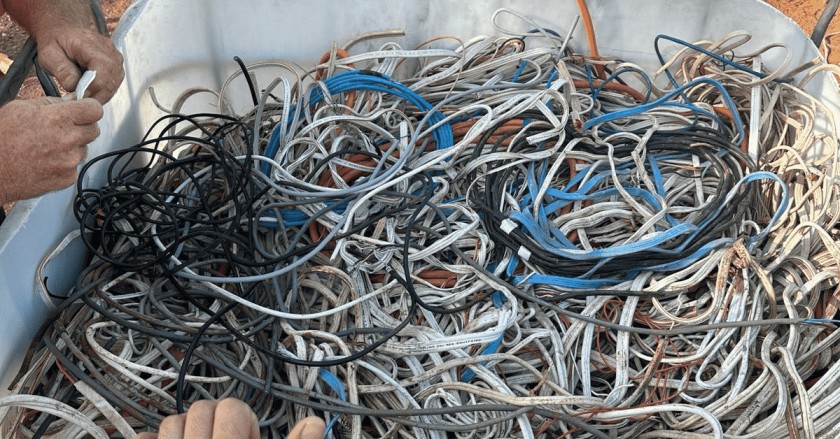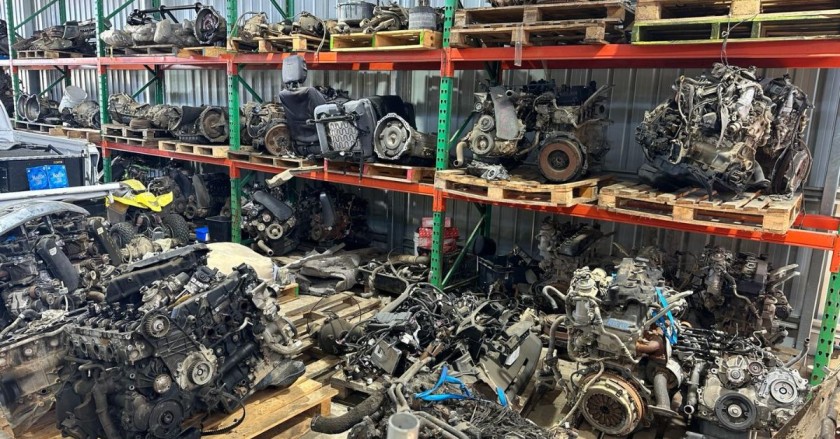Brass is one of the more valuable non-ferrous metals commonly found in a wide range of everyday items from household plumbing fixtures and door handles to industrial machinery components and electrical fittings. Its durability, corrosion resistance, and copper content contribute to its relatively high value in the scrap metal market.
Understanding how scrap brass is priced is essential for anyone looking to sell. Prices can vary significantly depending on market trends, brass type, material condition, and scrap metal buyer location. This blog provides a detailed look at how brass pricing works in Sydney, the main factors that influence its value, and tips on how sellers can maximise returns when trading in their scrap brass.
What is Brass and Why is it Valuable?
Brass is a metal alloy primarily made from copper and zinc. Its bright gold-like appearance, resistance to corrosion, and durability make it a popular choice for plumbing components, locks, musical instruments, and electrical connectors.
Because of its copper content, brass holds significant market value. Even when it’s no longer usable in its original form, brass can still be sold as scrap, offering a financial return for both individuals and businesses.
There are different grades and types of brass, each carrying slightly different price points. For example:
- Yellow brass is the most commonly found and is used in plumbing fixtures and decorative items.
- Red brass, also known as gunmetal, contains more copper and is often more valuable.
- Mixed brass refers to unsorted brass items that may contain attachments or other metals.
Factors That Affect Scrap Brass Prices in Sydney
Brass prices do not stay the same throughout the year. Several factors influence the rates offered by scrap yards and metal buyers across Sydney. Knowing what drives these fluctuations can help sellers maximise their returns.
1. Global Commodity Market Trends:
Brass pricing is closely tied to the international prices of copper and zinc—its two primary components. If copper prices rise globally, brass prices often follow. Market shifts in major manufacturing countries like China or the United States can influence demand and, in turn, scrap metal prices in Australia.
2. Local Supply and Demand:
Like any commodity, the local supply and demand for brass also affects pricing. In periods where there is a high volume of brass scrap in circulation—such as after large construction projects—buyers may offer lower rates. When supply is tight, prices tend to increase.
3. Cleanliness and Purity of the Scrap:
Scrap that is clean and free from contaminants generally commands a higher price. Buyers assess whether the brass is free from paint, fittings, or other attached materials. Clean brass is easier to process and typically qualifies for a better rate per kilogram.
4. Quantity Being Sold:
The total weight of brass being offered can influence pricing. Sellers offering larger volumes of sorted, clean brass may receive higher per-kilogram rates or qualify for bulk pricing. Smaller quantities may fall into standard or mixed-metal pricing brackets.
5. Exchange Rates and Economic Factors:
Since metal commodities are traded in U.S. dollars, the strength or weakness of the Australian dollar can have an indirect effect on brass prices. Broader economic indicators, such as inflation, infrastructure spending, and global trade policies, also contribute to price fluctuations.
Current Scrap Brass Prices in Sydney
As of the latest update, brass prices in Sydney generally range from $4.50 to $6.20 per kilogram, depending on the type and condition of the material. Below is a general overview of what sellers might expect based on brass type:
| Type of Brass | Estimated Price (per kg) |
| Yellow Brass | $4.50 – $5.20 |
| Red Brass (Gunmetal) | $5.50 – $6.20 |
| Mixed Brass | $4.00 – $4.80 |
| Brass Turnings | $3.00 – $3.80 |
These prices can change week to week depending on market activity. It’s a good idea for sellers to check with local metal buyers or online metal indexes for real-time price updates before selling.
How to Get the Best Brass Scrap Price in Sydney
Sellers can take several practical steps to ensure they receive the best possible return for their brass scrap. Even small efforts to prepare and sort the material can make a significant difference in pricing.
1. Sort Brass by Type: Separating red brass, yellow brass, and mixed brass allows buyers to price the material more accurately. Unsorted brass is often downgraded to the lowest value category, so taking time to identify and separate materials can increase returns.
2. Remove Attachments and Contaminants: Brass items that include plastic, paint, steel screws, or other attachments are classified as “dirty brass” and priced lower. Removing these contaminants ensures the scrap is considered clean, which usually qualifies it for a higher price tier.
3. Accurately Weigh the Material: Sellers should be aware of the total weight of their brass scrap and verify it using certified scales. Most reputable scrap yards weigh materials in front of the customer using legal-for-trade scales for full transparency.
4. Get Multiple Quotes: It can be worthwhile to contact multiple metal buyers in Sydney to compare quotes. Some buyers may offer higher rates based on current demand or be more competitive for certain types of brass.
5. Sell in Larger Quantities: Selling brass in larger volumes may make the transaction more worthwhile. Buyers often offer better rates to customers bringing in bulk loads because the processing cost per kilogram is lower.
Why Brass Pricing Fluctuates More Than Expected
Scrap brass price in Sydney can fluctuate more frequently than many sellers expect, due to a variety of dynamic factors. One of the key influences is the level of infrastructure activity. Large construction projects and urban developments across the city increase the demand for raw and recycled brass, often pushing prices higher. When these projects slow down, the demand may drop, leading to a reduction in scrap brass prices. This link between construction activity and market demand creates short-term volatility that can be difficult to predict.
External economic forces also play a significant role in price fluctuations. Shifts in global manufacturing output, particularly in major economies, can impact the demand for metals like brass. Trade policies, tariffs, and disruptions in international supply chains can also affect availability and pricing. Additionally, seasonal patterns influence the local market—more scrap typically enters circulation during the warmer months when construction and renovation work are at their peak, which can drive prices down due to higher supply. In contrast, supply may tighten during the winter, leading to potential price increases.
Common Questions About Scrap Brass Pricing
1. Is brass more valuable than copper?
Brass generally has a lower market value than copper due to its zinc content. However, certain types of brass, like red brass, come closer in value to copper because of their higher copper percentage.
2. Can brass be sold if it is mixed with other metals?
Mixed metals can be sold but are often priced lower. Brass combined with steel, aluminium, or other contaminants may be downgraded. Separating metals ensures better pricing and easier processing.
3. What is the difference between red and yellow brass in terms of pricing?
Red brass typically contains more copper and is heavier, making it more valuable per kilogram. Yellow brass is more common and has a slightly lower market value.
4. Does the amount of brass affect the price per kilogram?
Yes, selling brass in large quantities may result in better rates. Many scrap metal yards offer tiered pricing or negotiate higher rates for bulk deliveries.
Sure! Here are two additional relevant questions and answers to include in the “Common Questions About Scrap Brass Pricing” section:
5. How often do scrap brass prices change?
Scrap brass prices can change weekly or even daily, depending on global metal markets, currency exchange rates, and local supply and demand. It’s advisable to check current rates before selling, especially during times of economic or industrial activity.
6. Do all scrap yards in Sydney pay the same price for brass?
No, prices can vary between scrap yards based on their processing capabilities, current inventory levels, and buyer agreements. Some may offer higher rates for clean or sorted brass, while others may have lower base rates. Comparing quotes from different buyers can help secure a better deal.
Conclusion
Brass is a consistently valuable scrap metal, and Sydney offers a dynamic market for sellers looking to profit from unused or leftover materials. Understanding how brass is priced, what affects its value, and where to sell can make a significant difference in earnings.
From checking market rates to sorting and cleaning materials, a little preparation goes a long way in maximising the return on brass scrap. Staying informed and choosing reputable metal buyers ensures not only a fair price but also a smooth, reliable transaction.
Sellers are encouraged to stay updated on current pricing trends, assess the condition of their materials, and compare buyer offerings before proceeding. With the right approach, brass scrap can offer excellent value in today’s Sydney metal market.



